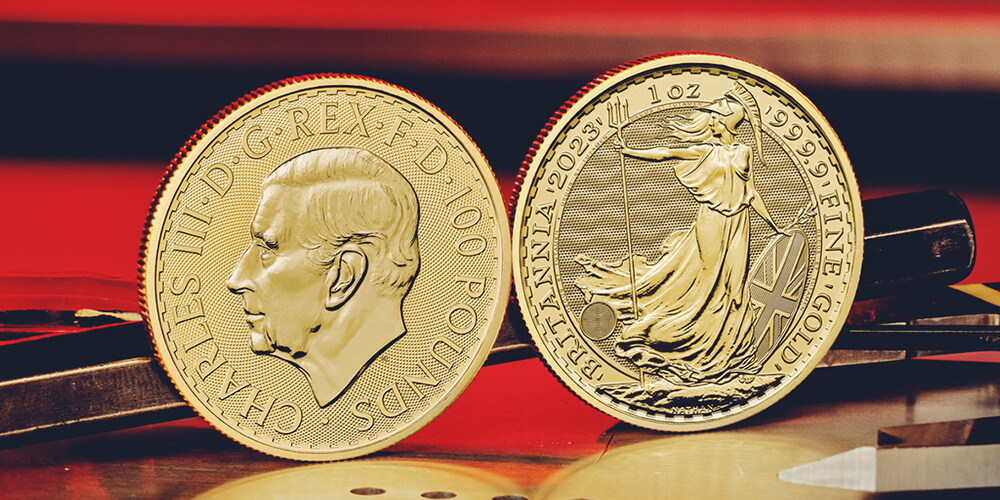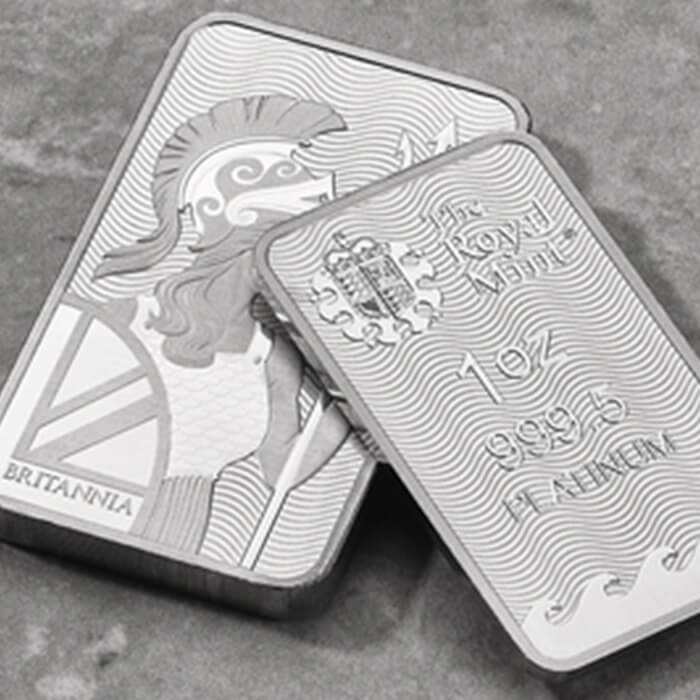
How did Gold Perform in 2022?
In 2022, gold demonstrated its capacity to preserve wealth by beating inflation, rising 12.4% between the first and last LBMA fixes of the year. Alongside inflation, interest rates and geopolitical uncertainty were the key drivers of the gold price in 2022. The price of gold climbed following Russia’s invasion of Ukraine, and in GBP terms, remained relatively steady for the rest of the year. The fluctuating values of the Pound and the Dollar were responsible for the different patterns for the same metal in 2022.
Globally, gold exchange-traded funds (ETFs) saw net outflows for the second year in a row, with Assets Under Management shrinking by 3.2% in 2022. However, our own exchange-traded product was one of the best performing, growing by 183% in the same period. Much of the growth of The Royal Mint’s product, The Royal Mint Responsibly Sourced Physical Gold ETC (RMAU), can likely be attributed to its unique proposition:
- Custody: Gold is held in The Royal Mint’s own on-site, high-security vault in South Wales – most other ETFs choose to store their gold with banks in London
- Flexibility: Investors who own RMAU securities can opt to have their gold physically delivered to them in the form of coins or bars produced by The Royal Mint
- Responsibly Sourced: 100% of the gold held by the ETF was produced in 2019 or later, meaning it was manufactured in line with London Bullion Market Association guidance that governs how refineries must ensure the highest ethical standards
- Recycled: The Royal Mint is working to increase the proportion of the fund that is backed by gold bars made entirely from fully recycled metal
In terms of the broader gold ETF market overall, the net outflows are a sign of growing confidence from professional and institutional investors, who appear optimistic that central banks will effectively tackle inflation through monetary policy.
According to data from the World Gold Council [1], UK demand for gold bars and coins was the strongest in a decade. Customers of The Royal Mint – and our international counterparts – bought bullion coins and bars in large quantities. In terms of ounces, 2022 saw The Royal Mint sell 25% more gold and 29% more silver than in 2021 – which was itself a record year.

What is the Outlook for Precious Metals in 2023?
The primary aim of many bullion coin and bar buyers may be investment, but collecting or owning a piece of history also remains a key motivation. The potential increased volume of collectors in the market, in addition to regular investors, may well boost overall coin demand at a time when supply chains are still struggling to adjust to meet the demand for bullion products following the pandemic.
In the absence of any major geopolitical event or other market shock, eyes will no doubt be on central banks and monetary policy, as well as indicators that help investors gauge whether economies are likely to enter into recession.
We have seen quite sizeable increases in interest rates in 2022, but continued rate rises may not be sustainable, and inflation and other economic indicators have the potential to alter the course of monetary policy. Much has been written by analysts about how high interest rates in the major economies will go, with some even suggesting 8-9% in the US. This would have implications for the wider global economies, as well as the policies of other central banks like the Bank of England and the European Central Bank.
Rising interest rates are generally seen as negative for gold, but investors weigh this against inflation and market expectations. A perceived policy mistake by central banks – increasing interest rates too dramatically, or not sufficiently – may have the potential to push gold higher as investors flock to the precious metal as a ‘safe haven’ asset.
The Office for Budget Responsibility has predicted that the UK economy will shrink by 1.4% in 2023 and only grow mildly in 2024 (1.3%). The IMF has also warned that a third of the world’s economies will be in recession this year. Historically, recessions have been positive for the gold price.
In the absence of further major shocks in 2023, investors might look to put their money into commodities, particularly gold but also silver. Indeed, the reopening of China following the easing of its zero-Covid policy is likely to both boost demand for gold jewellery and strengthen the Chinese Yuan. Gold sales in the run up to the Chinese New Year celebrations on January 22 may provide an indication of the level of demand for gold, and those looking for a culturally relevant investment or thoughtful gift might consider The Royal Mint’s recently launched Guan Gong 20g gold bar.
Gold’s performance in Pound Sterling in 2022 demonstrated why many see gold as a store of wealth. And whether 2023 proves to be a good or bad year for investment portfolios in general, 2022 has served to remind UK investors of the value of holding gold as part of a diversified portfolio.
Andrew Dickey, Divisional Director for Precious Metals, said:
“It is always difficult to predict what will happen regarding the price of gold and other precious metals. However, in 2022 we saw unprecedented investor demand for bullion coins and bars, as well as increased interest in our Gold for Pensions offering and physically-backed digital products such as DigiGold. Our ETC experienced exceptional growth in a year which saw many under perform.
“We always recommend that existing investors looking to expand their holdings and new customers interested in adding gold to a diversified portfolio conduct thorough research and speak with a financial advisor before making any significant decisions. We look forward to seeing what 2023 brings and would like to wish our customers a healthy and prosperous year ahead.”
Sources:




